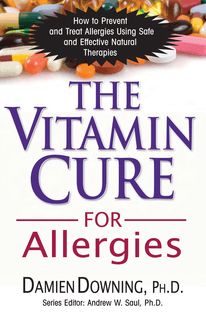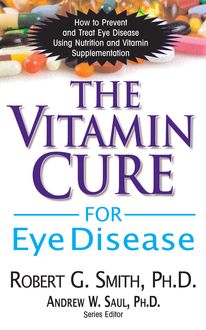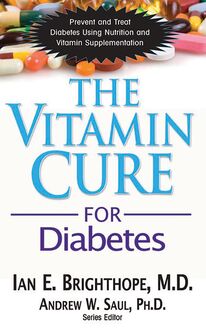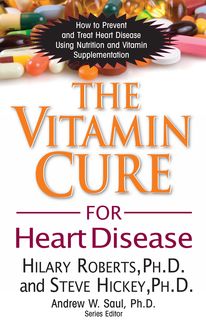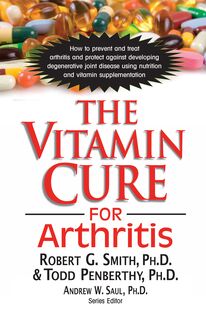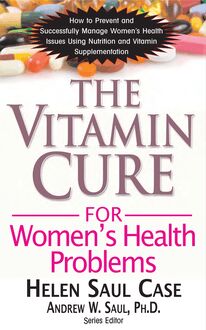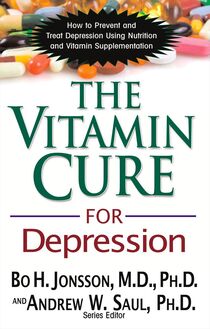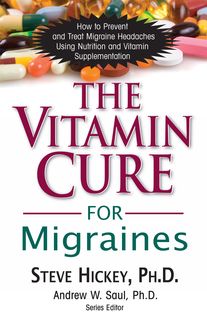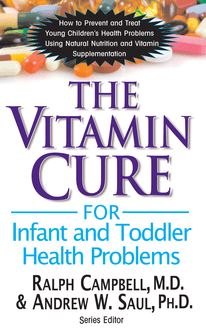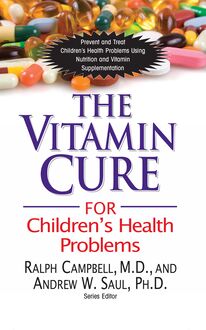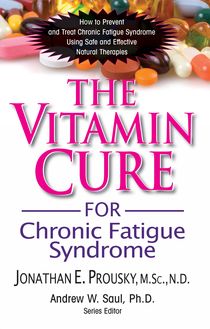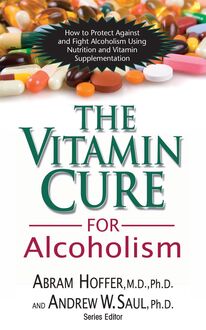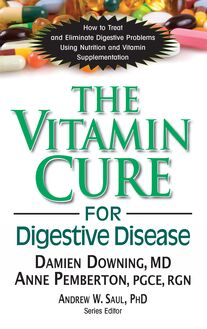The Vitamin Cure for Arthritis , livre ebook
229
pages
English
Ebooks
2015
Vous pourrez modifier la taille du texte de cet ouvrage
Obtenez un accès à la bibliothèque pour le consulter en ligne En savoir plus
Découvre YouScribe et accède à tout notre catalogue !
Découvre YouScribe et accède à tout notre catalogue !
229
pages
English
Ebooks
2015
Vous pourrez modifier la taille du texte de cet ouvrage
Obtenez un accès à la bibliothèque pour le consulter en ligne En savoir plus
Publié par
Date de parution
01 janvier 2015
Nombre de lectures
3
EAN13
9781591207252
Langue
English
Publié par
Date de parution
01 janvier 2015
EAN13
9781591207252
Langue
English
THE V ITAMIN C URE
for Arthritis
R OBERT G. S MITH , P H D
W. T ODD P ENBERTHY , P H D
The information contained in this book is based upon the research and personal and professional experiences of the authors. It is not intended as a substitute for consulting with your physician or other healthcare provider. Any attempt to diagnose and treat an illness should be done under the direction of a healthcare professional.
The publisher does not advocate the use of any particular healthcare protocol but believes the information in this book should be available to the public. The publisher and authors are not responsible for any adverse effects or consequences resulting from the use of the suggestions, preparations, or procedures discussed in this book. Should the reader have any questions concerning the appropriateness of any pro cedures or preparation mentioned, the authors and the publisher strongly suggest consulting a professional healthcare advisor.
Basic Health Publications, Inc.
28812 Top of the World Drive
Laguna Beach, CA 92651
949-715-7327 www.basichealthpub.com
Library of Congress Cataloging-in-Publication Data
Smith, Robert G.
The vitamin cure for arthritis / Robert G. Smith, Ph.D., W. Todd Penberthy, Ph.D.
pages cm
Includes bibliographical references and index.
ISBN 978-1-59120-725-2
1. Arthritis-Alternative treatment-Popular works. 2. Arthritis-Diet therapy-Popular works. 3. Vitamin therapy-Popular works. I. Penberthy, W. Todd.
II. Title.
RC933.S56 2015
616.7 22-dc23
2014043795
Copyright 2015 Robert G. Smith and W. Todd Penberthy
All rights reserved. No part of this publication may be reproduced, stored in a retrieval system, or transmitted, in any form or by any means, electronic, mechanical, photocopying, recording, or otherwise, without the prior written consent of the copyright owner.
Editor: Karen Anspach
Typesetting/Book design: Gary A. Rosenberg
Cover design: Mike Stromberg
Printed in the United States of America
10 9 8 7 6 5 4 3 2 1
C ONTENTS
CHAPTER 1:
Responsibility for Learning about Health: Your Role
CHAPTER 2:
The Discovery and Importance of Essential Nutrients
CHAPTER 3:
Joints: How They Work and What Can Go Wrong
CHAPTER 4:
What Genetics Can Teach Us about Arthritis
CHAPTER 5:
Nutritional Treatments for Arthritis: The Evidence
CHAPTER 6:
Restoring Cartilage after Complete Loss
CHAPTER 7:
Prevent and Reverse Arthritis through Lifestyle and Food
APPENDIX:
Favorite Recipes
References
About the Authors
CHAPTER 1
R ESPONSIBILITY FOR L EARNING ABOUT H EALTH : Y OUR R OLE
I n his book, Doctor Yourself, nutritionist Andrew W. Saul, Ph.D. describes the recovery of several of his clients from debilitating osteoarthritis. 1 One, a woman, almost eighty years old, was a housekeeper who worked with her hands. When she came to Dr. Saul, she had several health problems, but her main priority was to do something about her osteoarthritis. She was desperate, and was willing to try anything to regain her health. She was overweight and bent over from arthritis, unable to close her hands, and her knees were swollen and painful. She was sore all over and had lumps on her arms and legs. All of her symptoms were typical of age-related osteoarthritis, so Dr. Saul knew what to do. He advised her to eat only juiced vegetables for several weeks and then continue to eat only raw foods such as vegetables and sprouts. He knew that, typically, few people keep up this type of diet. However, the woman was determined. She tried the diet of juiced vegetables but wished for other foods such as soup and cooked vegetables. Dr. Saul explained that this would be OK, as long as the focus of each meal was vegetable juices. She could have other vegetarian foods such as cooked beans and brown rice, because the main point was to eat better overall. Over the next several months, she continued to contact Dr. Saul intermittently to ask if this or that food would be OK to combine with the raw vegetable diet. And the good news was she was continuing with the regimen. Then, after a year without any word from her, Dr. Saul was shopping in a health food store one day and was surprised to find a tall, rather graceful woman he didn t recognize. But he recalled her voice when she asked, Do you remember me? Her arthritis and the lumps on her arms and legs were completely gone. Without any other treatment, she was cured. We hope this can be your story too!
This book is about how to prevent and reverse arthritis through excellent nutrition. There are several types of arthritis, but they all involve degeneration of the joints and tissues surrounding them. It is considered to be a progressive disease, meaning that once the symptoms are diagnosed, they tend to get worse. The ends of our leg bones rub upon each other while carrying the weight of the body. In normal joints, they do this throughout a lifetime of constant wear and tear without damage, but with arthritis, the joint becomes inflamed and damaged, causing severe pain. The pain in arthritis can be continual, debilitating, and for some types of arthritis, crippling. The inability to walk or move the hands without pain induces severe stress, both physical and mental. Arthritis affects one in five Americans, and more than 100 billion dollars is spent each year in this country for its treatment. 2 With life expectancy extending significantly further every decade, and without a widely accepted cure, the incidence of arthritis is expected to increase. Millions of people worldwide are motivated to do whatever necessary to be free from their pain. Although drug treatments exist for age-related arthritis, they generally don t cure the disease, and usually can only slow the progression and treat the pain. Thus arthritis is widely thought to be incurable. This prognosis may lead arthritis sufferers into depression and a major life crisis. However, most forms of arthritis can be effectively treated and prevented by an excellent diet and vitamin supplements taken in adequate doses.
TYPES OF ARTHRITIS
Over the last century, the standard explanation for the cause of arthritis has been that over time our joints simply wear out; that is, the cartilage that lubricates the ends of the bones gets worn thinner and thinner until one bone is wearing directly on another. It stands to reason that wear and tear is responsible for some of the damage. As arthritis sufferers know from their pain, excess stress on an arthritic joint can make it worse. Yet arthritis can be reversed, as we will describe below. The degraded cartilage in a joint can regrow. 3 The process of degradation and regrowth in a joint is a dynamic process that continues throughout life. Arthritis results when the joint does not recover from damage.
Osteoarthritis (OA) is the most common form of arthritis, occurring in about 20 percent of adults, and is typically age-related and usually seen in older people. Arthritis affects more than half of adults over sixty-five, and 50 percent more women than men. 4 OA can be caused by an earlier injury to the joint, for example, after an injury to the knee and surgery to repair the meniscus in the knee joint. 5 Among its symptoms is a progressive destruction of the joint s cartilage, which reduces the ability of the joint to move and induces acute pain. In severe osteoarthritis, the bones rub directly against each other, causing damage to the bones and excruciating pain. OA can affect almost any joint in the body, and is commonly found in the hands, feet, hips, knees, and the lower back. The risk of developing OA is currently thought to be a combination of genetic factors, together with the specific shape of the individual s joint and surrounding bones, and its history of weight loading and damage. 6 The pain of OA often starts in one joint before it appears in other joints.
Rheumatoid arthritis (RA) occurs in only about 1 percent of adults and is more common in women. It is similar to osteoarthritis in being a disease of the joints, but typically its onset is in younger adults, usually above the age of twenty, yet sometimes in children as young as four. Often the onset appears to be triggered by an injury or illness. RA often affects the hands, wrists, and feet, usually on both sides of the body. It is caused by an aberrant response of the immune system to attack the joints and other tissues. The immune system attack tends to deteriorate the joint lining and the cartilage, leading to a similar type of degeneration of the bones as in osteoarthritis. In lupus (also known as systemic lupus erythematosus, or SLE), a chronic inflammatory disease, many organs of the body are damaged, including the joints, causing a similar degeneration. Both RA and lupus are typically seen symmetrically on both sides of the body, and they share several similar features. However, lupus typically doesn t cause as much damage as RA. Other symptoms typical of lupus are muscle pain and tendon pain associated with a joint.
Gout, another type of arthritis, is caused by crystals of uric acid that are deposited in the joint, causing inflammation and pain. It is about five times more common than RA. 7 Gout is caused by abnormally high blood levels of uric acid, a byproduct of the metabolism of protein-rich foods that contain purines, which are found in all foods but especially meat and fish. The uric acid precipitates as crystals in the joints and on the tendons and nearby tissues, and this triggers an immune response that causes pain and damage. Gout is more likely to start in the night when the body temperature is lower because this tends to trigger precipitation of the uric acid crystals. It can also be caused by a reaction to a drug, for example gemcitabine taken for cancer chemotherapy. 8
Another type of arthritis is caused by infections, such as Borreliosis (Lyme disease) and its associated co-infections including mycoplasma and ameba. 9 Lyme disease a
